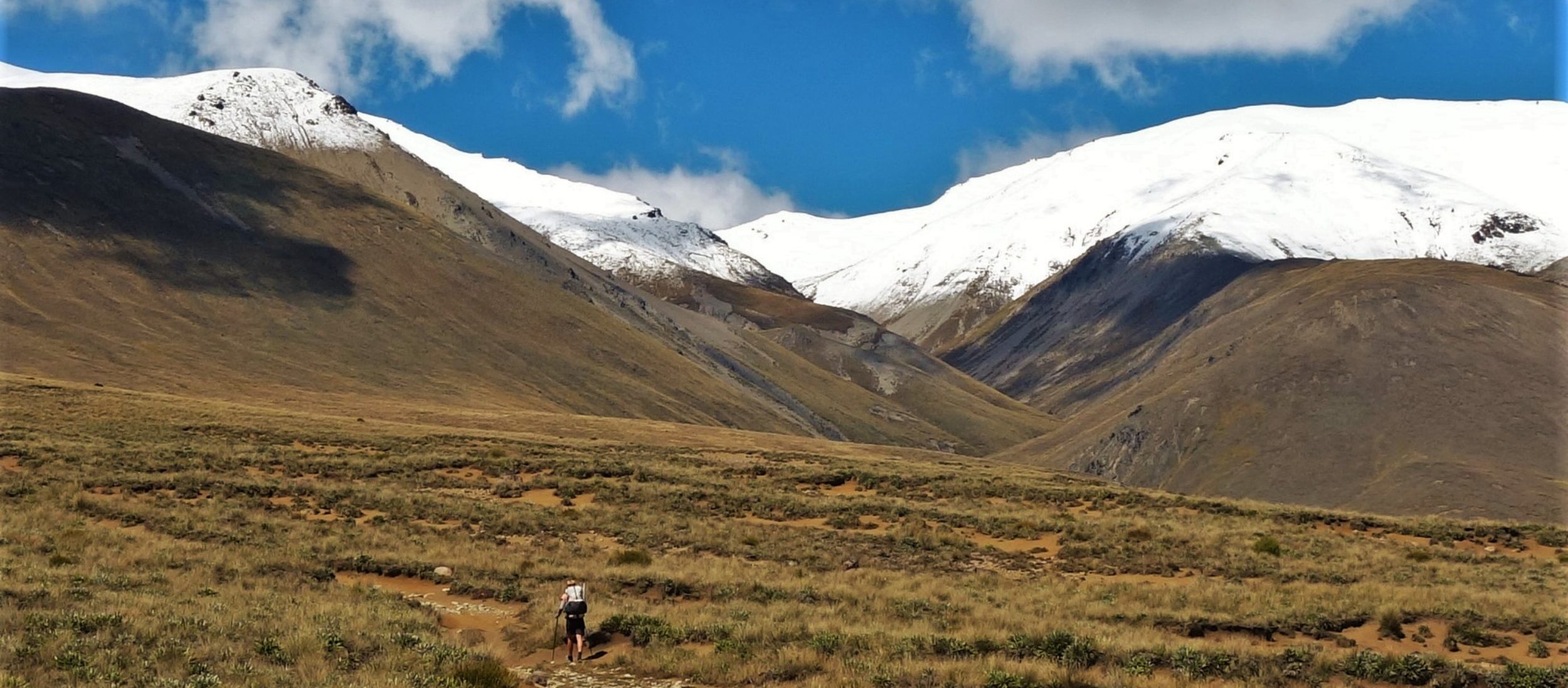Saturday, March 2nd 2024
Ledges Camp mile 152 to Lower National (Sandblaster Camp) mile 167
15 miles, elevation 1768′
Not surprisingly, I didn’t sleep very well, having a hard time getting comfortable. Everything was aching from my fall, not just my shoulder. I took another Vicodin as soon as I woke, waiting for it to kick in before I started moving. A pair of pesky ravens forced me out of my tent, their cries warning that they were awake and raiding our camp again. They’d swooped in as soon as we landed the day before and had already taken off with some various loot, including a whistle. We did a good job protecting our food but they were willing to steal anything that looked interesting and was small enough. To make matters worse, the seep under my tent began to run overnight, soaking the bottom of my floor. I was happy to pack and leave this troublesome campsite behind, though it was a challenge. The worst was crawling into my drysuit for the day. Tina helped me get my sore arm into the right hole…now I needed help just getting dressed…not good.
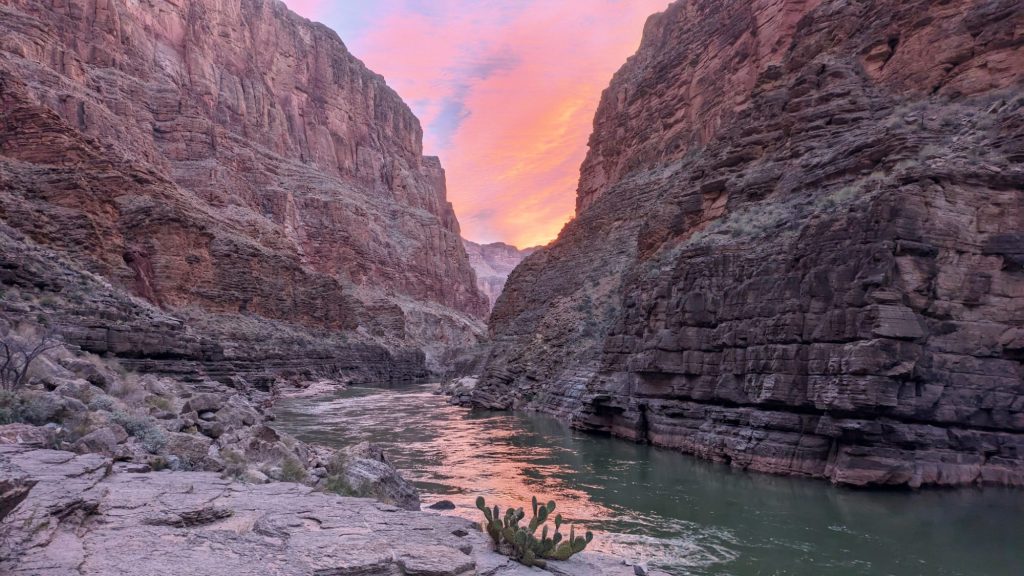
I rode with Cleve and Charlie A. once again, figuring I could be the most useless on their boat, since they’d been getting by without anyone else the whole trip. But of all the days where it would have helped to have another person rowing, this was it. The wind picked up something fierce just as we arrived Havasu canyon. We stopped there for a long while to do some exploring. The entrance to the canyon was completely inundated by the creek waters, which were flowing at a substantial rate through the narrow and sheer walls. We would have to swim to get to the upper parts of the canyon. I was despondent, knowing that I couldn’t swim and wasn’t going to get to see the canyon, one of the most anticipated sights of the whole trip. Fortunately Charlie N. kindly came to my rescue. He swam through the tight passage then let a line drift down, telling me to grab hold. It was kind of humiliating to have to be dragged up the canyon like a sack of potatoes, but it was the only way I was going to make it. Once clear of the narrows, we were able to walk a ways up the canyon. I didn’t go more than 100 yards, feeling very unstable and off-balance without the use of my arm. So I sat down by a nice waterfall and enjoyed the sounds of the canyon. I found a cute frog and marveled at how well it matched the black spots and pinkish hue of the granite….incredible! The Grand Canyon holds wonders among wonders, from scales on the order of miles down to the microscopic.
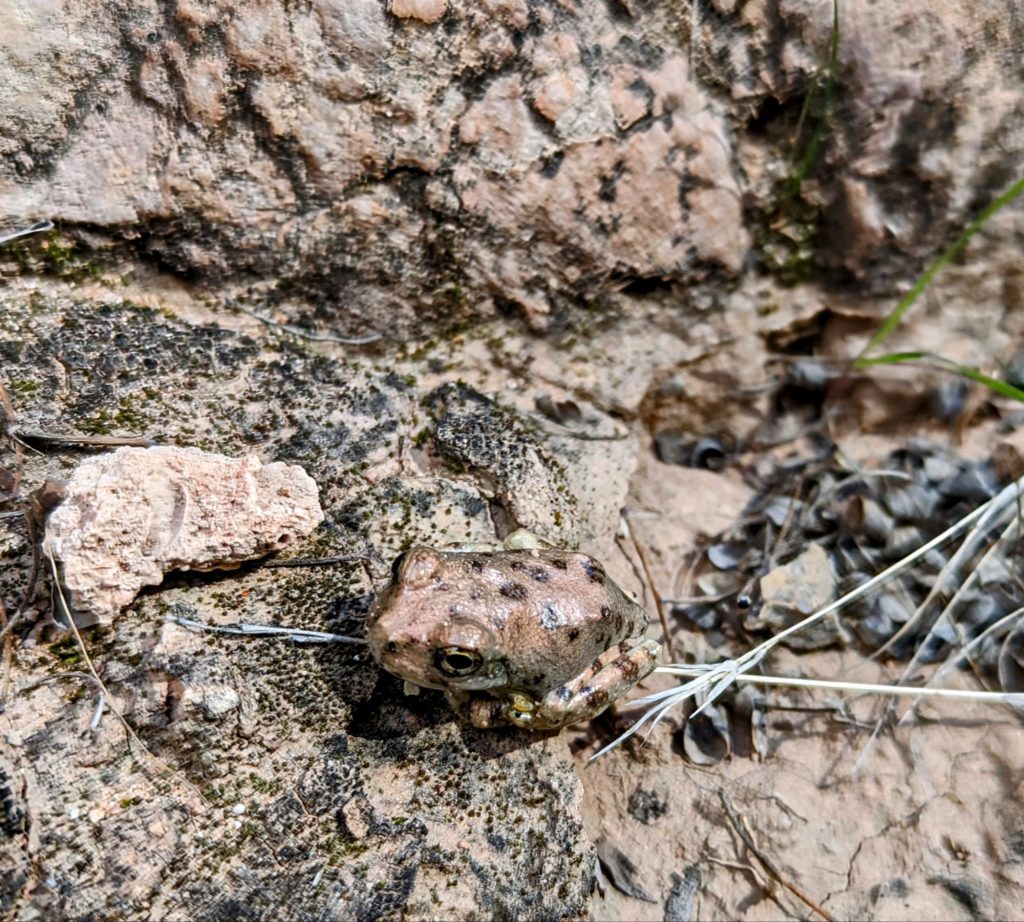
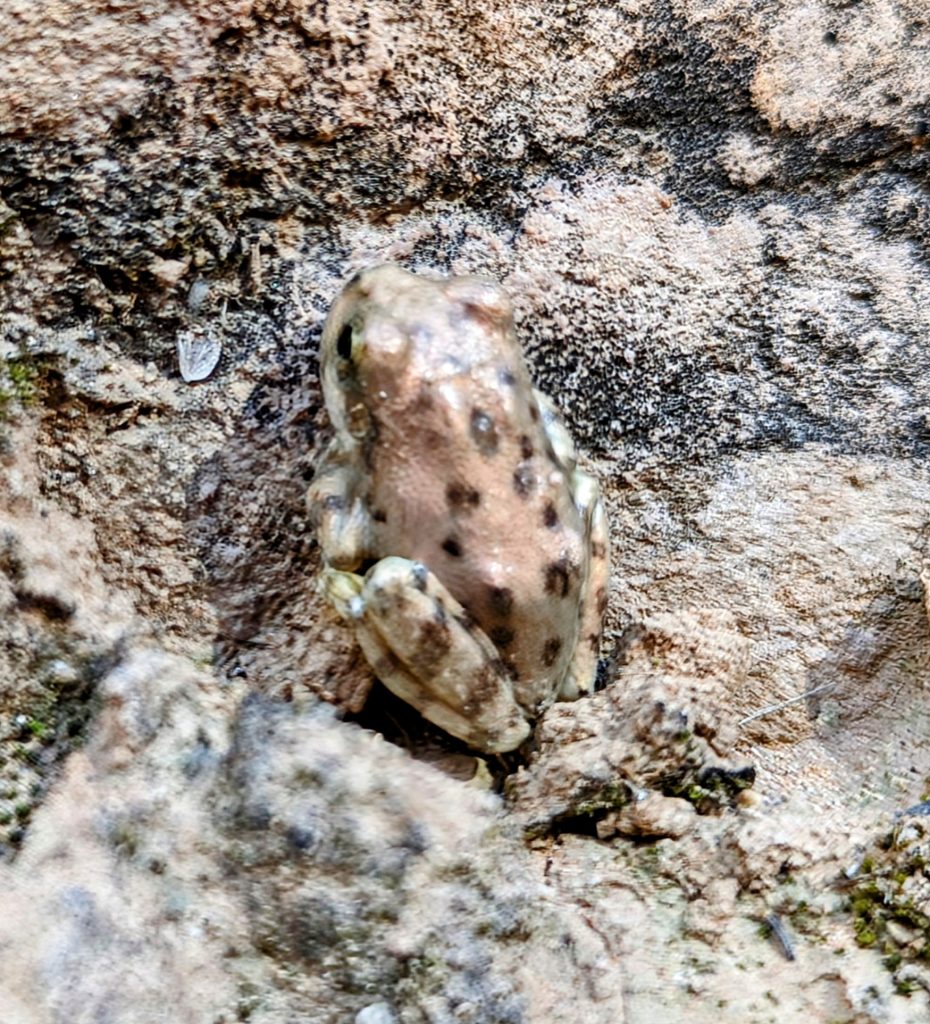
We met 2 hikers who were coming from way above, via hiking trails that were regulated by the Havasupai tribe. They told me that it cost over $400 per person for permits to camp and hike in the canyon! Not to mention just the difficulty of getting the permits, which were highly sought after online. No wonder I hadn’t looked into hiking this canyon. Don’t get me wrong, it was a beautiful canyon but then again, there are so many beautiful canyons within the park, for which it’s relatively easy to get a permit and far more affordable. Kanab, Nankoweap, Tanner, Saddle, Crystal, Deer creek, Bass…the list is pretty extensive. I knew I’d focus on exploring those canyons more before jumping through the many hoops needed to hike Havasu. Still, I was thankful for this sneak peak.
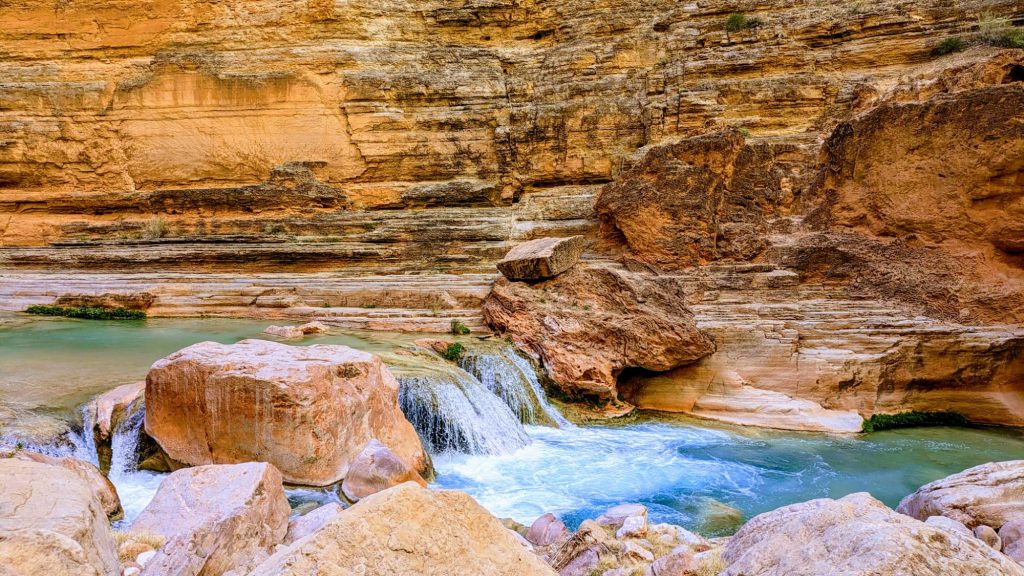
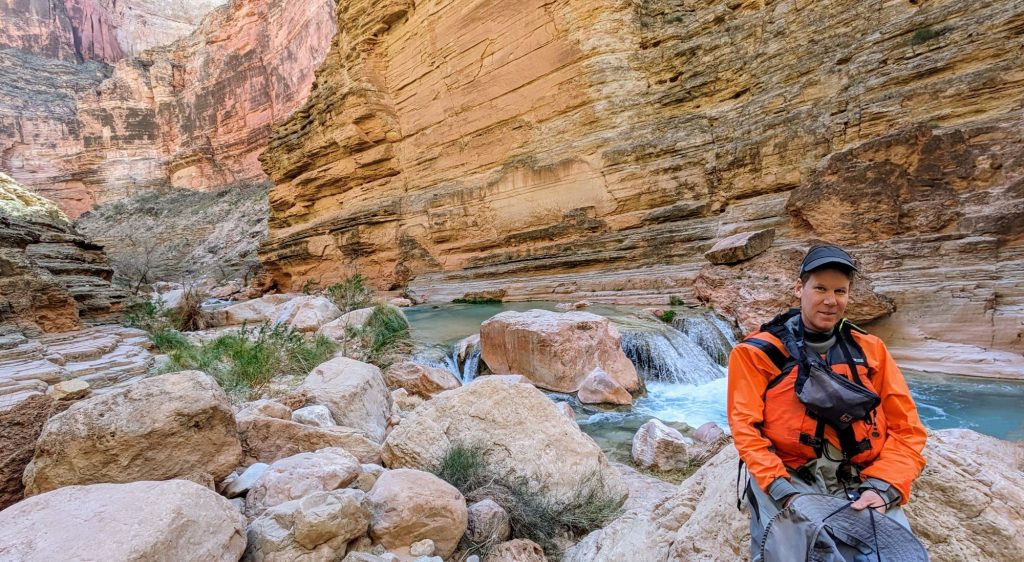
The hikers were disappointed to have come all the way to the bottom, only to find the river in-accessible, unless they were willing to swim. They weren’t wearing drysuits and would have likely gotten very cold. So we offered to take them down the last little bit on the ducky. This way they got to raft a little bit too, sort of. They were the last hikers we would see in the canyon, though I later saw some tell-tale Altra footprints days later on the north side of the river.
We shoved off well after noon, planning to go another 8 miles to Tuckup Canyon for camp. By this time, the headwind was howling. To make matters worse, we entered several long and straight stretches. There were only two class 2 riffles to help push us along. Not that a stronger current would have made much of a difference, anyway. Inflatable rafts essentially have no keel but a lot of surface (sail) area, so they are far more affected by wind than current. Shortly we found that everyone needed to row extra hard just to make any headway. The second an oarsman took a break, their raft was pushed upriver or into an eddy and then they had to work even harder just to recover. At the beginning of the trip, I’d mentioned to one of the captains that the headwinds in the canyon could be fierce, bringing a raft to a standstill and even forcing it upstream. He was rather certain that the river current (on average about 3 kts in low flows) would always be enough to push a raft along. I knew from personal experience, both on and off the water, that this was definitely not true.
The day I’d hiked out of Moab on the Hayduke, I’d encountered 70 mph gusts. I walked though my first desert dust storm that day, only 3 days into the hike. Up to that point, I’d encountered plenty of hellacious winds on my hikes, but none so debilitating as those of the desert. There’s essentially no place to hide and the way the canyons funnel the wind, they create veritable wind tunnels. A fellow Hayduker that was trying to paddle a packraft down the Colorado from Moab broke his paddle and started going backwards the day before. He had to get off the river entirely and was very glad he wasn’t there during the brunt of the dust storm the next day.
The way the wind was ramping up this day, I knew a front was moving through. We’d been very lucky with a span of relatively calm weather up to this point, but it seemed our luck had changed. There were optimistic decries from others in the group that it was about to die down at any moment, but I also knew all too well to the contrary: it can blow for days to weeks on end in the desert. I hoped this wasn’t the case but at the very least, I estimated that we were in for some high winds for at least a day or two. That was generally how these fast-moving winter systems played out.
Fatigue quickly set in, as I watched one boat after the other fall behind us. I wanted so badly to help in the rowing but Cleve maintained a steady and strong pace with no problem, his stamina and skills kicking in. He was a thru-hiker just like me (having walked the entire Appalachian Trail in one season), so he was well-versed in putting his nose to the grindstone and pushing on, mile after mile. I kept calling off the distances to camp for motivation and finally we were within a mile. Relief quickly turned to disappointment though, as coming around a final bend we spotted a bright orange tent propped on the shore. Then we saw the prominent flags on the beach, whipping in the wind…those damned American’s had beaten us to the punch yet again! After 2 layover days, we thought they were well ahead of us. But no, here they were at a campsite we desperately needed to stop at, given the rising winds and our tired crews. We pulled over to let the rest catch up and decide what to do.
Chalk it up to tiredness and/or miscommunication, but what was put forth as a “this is what we should (need to) do” idea from Rob was taken as just a suggestion in a list of other options. There was plenty of room for us to camp next to the Americans and this was what he wisely proposed. But the majority of the rest of the boats wanted to push on another 2 miles to the next camp, and so we did. I didn’t weigh in on anything, since I was barely able to lift a finger. But I looked at my map with a sense of foreboding, realizing that the location of the further campsite would offer us almost no protection from the wind. Not only was Rob our trip leader, with final authority, his boat was also the lightest and sat highest on the water, so he was struggling the most with the wind. It should have been his call, and his alone, as to how we proceeded at that point. We realized our series of mistakes only after setting off from Tuckup (an appropriately named canyon to escape the wind). But by this time, we were committed to what lay downstream.
After another grueling hour, we arrived at the windblown campsite. We had a hell of a time just getting the boats to shore, due to the tricky eddies and unruly wind-driven rafts. Unable to catch lines or lift anything, I set off to do a quick assessment of the campsite and was troubled by what I found. It was mostly a flat, exposed sand bar at the downwind end of a straight run of canyon facing west. Most of the kitchen and tent sites were being scoured by the wind and sand. If I’d had the same adaptability I experience when thru-hiking by myself, I simply would have kept going and found a better, more protected spot. I’d learned through much trial and error that I can almost always keep pressing forward, and if not, I can also go back. Neither of these options were available to us as a sizable group. After all, going backwards is almost never an option in rafting and going forward might have only perpetuated and made worse the mistakes we’d already made. We were stuck at this site, whether I liked it or not. I could see the relief on many faces, just happy that they didn’t have to row anymore and were relatively safe on dry ground.
And then, right on cue, it started to rain. It was a brief shower but I could see more was on the way. As frustrated as we all were with the conditions and somewhat with each other, several blessed team mates again offered to help me set up my tent. I again refused but their generosity wasn’t lost on me, even if it appeared to be. I hated that it seemed like I wasn’t acknowledging their kindness by refusing the help, but I also couldn’t bear to be tying anyone up, as tired and desperate as everyone was. We all needed to secure our shelters and the others had the added complication of setting up the kitchen and trying to get a meal prepared in the bad conditions. Besides, I had no problem getting my tent up by myself. I found a tight spot in some willows and hoped for the best. The rain started again and I crawled inside, just wanting to remove myself from everything. It’s incredible what a haven a tent can be, even if it’s a relatively poor substitute for an actual shelter, especially in the wind.
Darkness fell and I could hear the commotion and smell the scents of dinner being prepared. I gotta hand it to the others for braving the elements and getting the chores done. As a solo hiker, I’d also enjoyed the luxury of foregoing certain tasks when conditions got bad. If it was too crappy outside to cook, then I simply snacked on other stuff I had in my pack. Since Rob had to actually order me to not help with the unloading of the boats that afternoon, I kind of dismissed myself from everything else this night. I wasn’t feeling very hungry and my shoulder had really started to hurt again, so I just lay there, resigned to calling it a day.
Sunday, March 3rd 2024
Lower National (Sandblaster Camp) mile 167
0 miles, elevation 1768′
I woke several times through the night as my tent shook violently from the gusts of wind that found me deep in the willows. By morning, everything inside my tent was covered by a layer of fine silt. It went right through my mesh and into every crevice. Even my teeth were gritty. I later read on a Park Service info-board that the native people were presumed to live short lives because their teeth became prematurely worn down by so much sand. I could relate. I hated this campsite and vowed to at least move my tent somewhere else during the day. I didn’t even know if we were taking a layover day but the mood around the breakfast circle certainly seemed that way. It was a lousy location to take a layover but the weather conditions pretty much decided it. The wind was still blowing strong and the forecast from the Garmin InReach predicted more throughout the day. It would have been counterproductive to row against such headwinds for a second day in a row, especially since more long straightaways lay ahead. We could certainly all use a rest day and I hoped it would help with my shoulder healing that much faster.
I could barely remember what all I did this day…it wasn’t much. I went for a short hike up the canyon, moved my tent behind a big boulder (out of the wind and also the line of smoke from camp), and then picked at some leftovers for lunch. By the late afternoon, I’d grown frustrated by how little I’d contributed to the chores, so I decided to try to help with dinner. Moving some pots and pans around and stirring and chopping was within my realm of abilities. Dinner actually turned out pretty well and I went to bed hopeful the last week would end on a high note. (Sorry, I didn’t even take one picture this whole day.)
